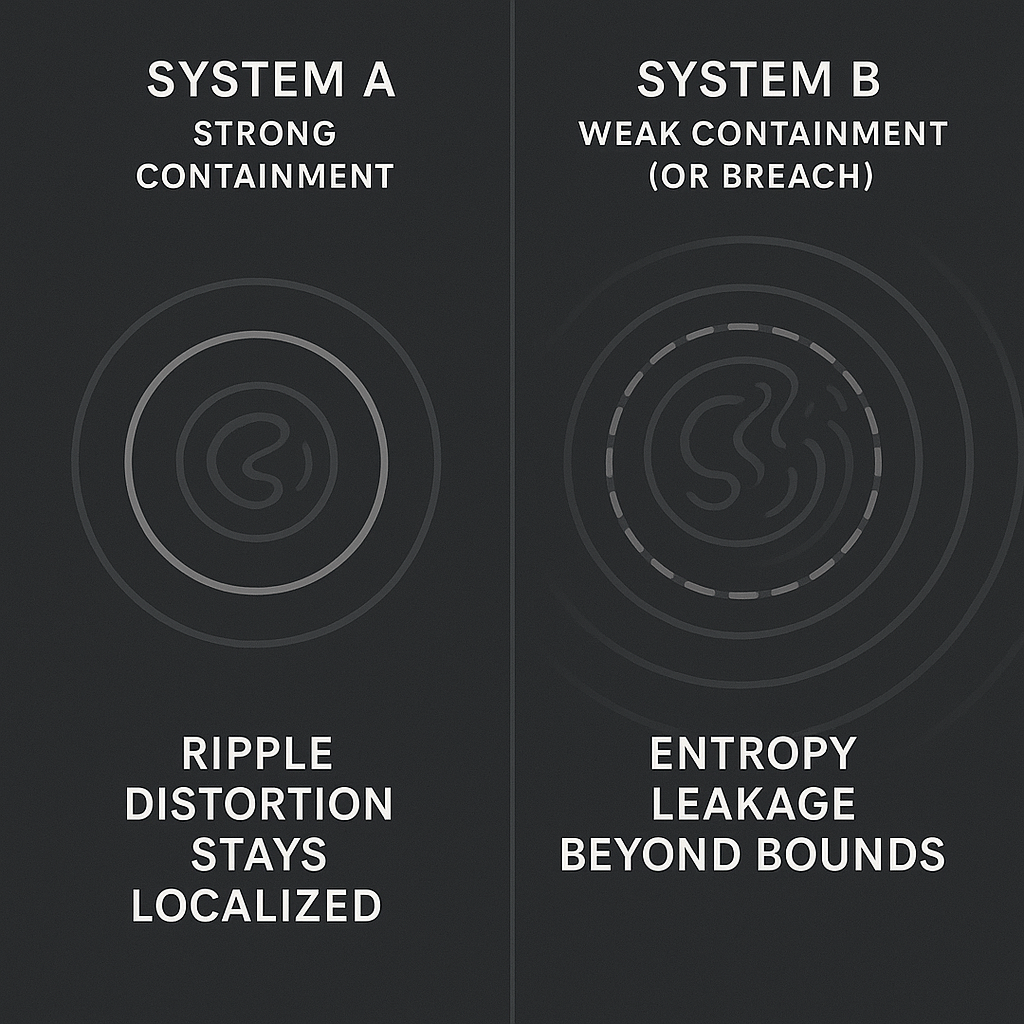This lesson explores how entropy behaves within containment zones, and how leakage — the escape of irreversibility beyond containment — reshapes ripple field structure. In URFT, a system's capacity to localize or isolate entropy determines its long-term coherence, stability, and rebound potential.
🔹 Section 1: Concept
In ripple field dynamics, systems often exist within containment fields — localized regions that preserve structure, memory, and ripple fidelity.
However, when irreversible change exceeds a system’s containment capacity:
Entropy leaks outward,
Ripple coherence decays,
Localized events affect broader regions.
Entropy Leakage refers to this spillover — when irreversible change cannot be fully contained and radiates outward, affecting the ripple geometry of surrounding systems.
The size, permeability, and resonance of a containment zone determine:
Whether entropy is absorbed, reflected, or released.
Whether the system retains local order or triggers cascade effects.
🔹 Section 2: Analogy
Think of a pressure cooker:
If sealed well, internal pressure builds safely (containment).
But if the valve fails or pressure exceeds limits, steam bursts out — not only releasing energy but also affecting the surrounding kitchen (entropy leakage).
The burst alters not just the contents but the external environment. In ripple terms, irreversible pressure escapes, distorting nearby echo paths.
🔹 Section 3: Simulation
Simulate two systems:
System A: Strong containment
Ripple distortion stays localized.
Echoes outside the boundary remain coherent.
System B: Weak containment (or breach)
Ripple distortion leaks beyond bounds.
Surrounding echoes become disorganized, asymmetrical.
Adjacent systems are pulled out of sync.
Visual output: A containment circle in both cases, with outward ripple chaos in B.
🔹 Section 4: Application
Entropy leakage explains:
Why black hole entropy affects nearby spacetime
Why localized system failure can trigger system-wide collapse
Why certain systems require layered containment zones to preserve fidelity
This also informs the design of echo-stabilized systems: ripple containment must account for worst-case irreversible rebound.
🔹 Section 5: Definition
Entropy Leakage: The uncontrolled propagation of irreversible change beyond a system’s containment field, distorting ripple geometry in adjacent regions and reducing echo coherence across systems.
🔹 Section 7: Test Path
Design an experiment:
Create a system with known ripple containment strength (e.g., optical trap, resonance box).
Introduce increasing entropy (random or irreversible inputs).
Measure the point at which external ripple fields become distorted.
Vary containment size, boundary resonance, or internal damping and compare leakage thresholds.
Also test “cascade resonance”: whether external systems begin to self-disrupt when adjacent containment fails.
